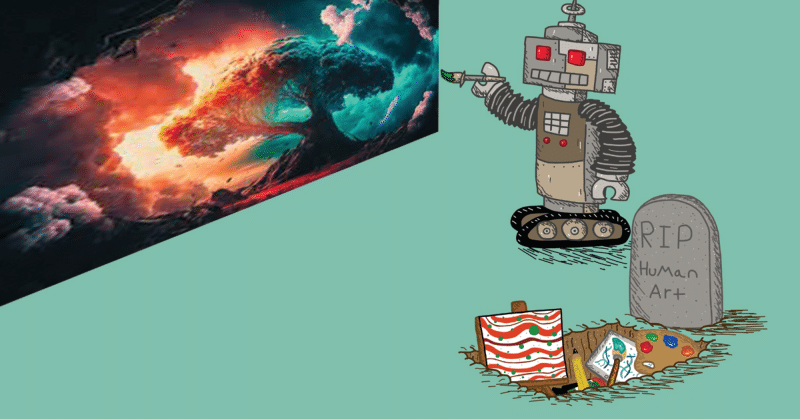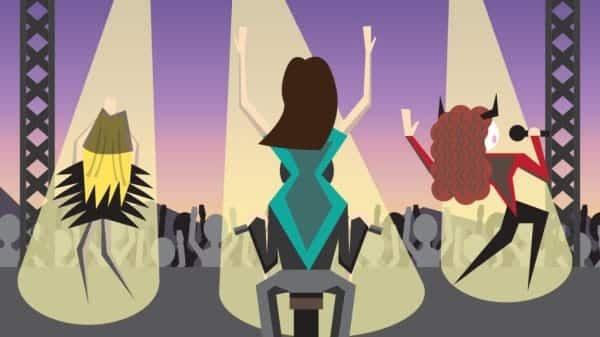It’s 11:59pm and you’ve just remembered that you have an assignment due tomorrow: “Write a short story about something that inspires you.” You chose to study creative writing… Thirty seconds to go, you scramble for your laptop. There’s one thing that’ll fix your poor time management skills and excellent ability to procrastinate: ChatGPT.
ChatGPT: The Next Bestselling Author?
Greeted with the all-too-familiar chat bar, you hurriedly type: “Can you write me a story about van Gogh” – he was pretty inspiring, right? Your cursor quivers in anticipation. Finally, an answer: “Of course! Here’s a story for you.”
In the serene village of Auvers-sur-Oise, Vincent van Gogh, the tormented artist, sought refuge from his inner turmoil. The night sky, with its shimmering stars, held an undeniable allure. Vincent’s small studio became his sanctuary. With a trembling hand, he dipped his brush into swirling blue paint. The night outside was ablaze with stars, and he was determined to capture its essence. Days and nights blurred as Vincent painted, losing himself in the cosmic dance. Finally, he stepped back, gazing at his masterpiece—the Starry Night.
Written by ChatGPT
Okay, so that story was genuinely written by ChatGPT, but don’t go using AI to complete all your assignments thirty seconds before the deadline. In this hypothetical situation, you got caught by the professor. Oh yeah, and she made the entire class answer the question “Will ChatGPT replace the job of authors?” Naturally, you decided to see what ChatGPT had to say for itself.
While AI like ChatGPT has the potential to assist authors and make certain aspects of the writing process more efficient, it is unlikely to replace the role of authors entirely, especially when it comes to creating truly original and emotionally resonant works of literature. Writing is a deeply human endeavor that goes beyond generating text, encompassing creativity, empathy, and connection with readers.
Again, written by the one and only ChatGPT
Sure ChatGPT, that’s super believable and definitely not ironic in the slightest. It does have a point though. We can train AI to write utilizing previous literature all we like. But, even with all the knowledge in the world, ChatGPT will always lack the fountain of creativity distinct to a human brain. However, when it comes to visual art, we encounter a few more ethical dilemmas.
The Van Gogh Immersive Experience
The Work of Art in the Age of Mechanical Reproduction
Way back when (1935 precisely), a dude called Walter Benjamin wrote The Work of Art in the Age of Mechanical Reproduction. Benjamin claimed that following the Renaissance, the function of art changed. It was no longer displayed for its cult value: the social and cultural characteristics attached to a piece by its audience. Instead, art was proven worthy based on its exhibition value.
Benjamin believed that new technological developments such as photography, which allowed for the reproduction of art, took away its ‘aura’. The aura of a piece is a reflection of its unique presence in time and space. Art Deco styles began to flourish as modernism gave way to post-modernism. Creation had been overtaken by recreation.
The Starry Night (virtually)
In recent years, immersive van Gogh exhibitions have been popping up all over the world. Two of the most famous exhibits are found in New York. One is at Pier 36, and another in Battery Park City. However, the city holds around 20 between the Met, the MoMA, and the Guggenheim.
These exhibitions project van Gogh’s life work across their walls, enlarged by tenfold. Since van Gogh died over a century ago, his oeuvre is now public domain. This means that the creators of van Gogh’s immersive experiences are free to copy, digitalize, and manipulate his art.
Feature exhibits include a room covered floor to ceiling in van Gogh’s ‘Sunflowers’, or, if you’re looking for something more interactive, there’s an AI van Gogh who will write you a letter using an algorithm compiled from his real-life letters. Oh, and of course there’s an extensive (and expensive) gift shop.
These displays provide viewers with the perfect set-up for a picture. They’ve soared to popularity on social media, as those who visit are provided the opportunity to photograph themselves within the art. However, the experience has proved underwhelming to many.
Van Gogh Immersive: In Review
In articles written for The New York Times, both Maya Phillips and Jason Farago comment upon the flaws that Immersive van Gogh holds. Phillips felt as if the art was merely used ‘as a backdrop for a kind of theatrical experience’ and that it was simply ‘strong-armed into an immersive medium’.
At worst, the exhibition reminded Farago of the ‘solitaire app’ and at best, was ‘not more sophisticated than the flat-screen visuals in airport terminals’. He also disapproved of the lack of nuance present. Instead of a ‘figure of history’, van Gogh was presented as a ‘lone, tortured genius’. Through ‘editing and exposition’, his works have been manipulated to make them appear as a ‘spontaneous outpouring of his soul’.
Will AI be The Death of Art?
Van Gogh has been dead for over 70 years. This means artists of today are entitled to use his works as they are public domain. Though van Gogh may be rolling in his grave at the thought of his virtual self writing letters to swathes of photo-hungry teenagers, it’s technically completely ethical.
However, in a follow-up to Walter Bejamin’s essay, David Douglas wrote The Work of Art in The Age of Digital Reproduction in 1995. In this essay, he claimed that ‘the fictions of ‘master’ and ‘copy’ are now so entwined with each other that it is impossible to say where one begins and the other ends’.
Until recently, artificial intelligence tools functioned via supervised learning. This meant that every piece of information they absorbed was provided to them by humans. AI used to create art would therefore be trained using images that were pre-approved and copyright-free.
However, recent developments have enabled AI such as Open AI’s DALLE, DALLE-2, and Stable Diffuse to begin unsupervised learning. This is completed using a process called ‘web scraping’. The AI will scour the internet for images that it can internalize and learn to replicate. For this reason, artists are unable to consent to the use of their images and are left completely uncredited.
A recent Harvard study tested AI on its replication of art from 62 artists and found that they could be imitated accurately up to 93% of the time by Stable Diffusion. In addition to this, it’s common for users of these AI tools to use the names of specific artists in their prompts. For example, users have searched for ‘Ghibli’ 172,000 times and counting.
The Ethics of AI Art
In an interview with Forbes, the founder of Midjourney, David Holz, commented on this morally grey practice:
Did you seek consent from living artists or work still under copyright?
‘No. There isnt really a way to get a hundred million images and know where they’re coming from. […] There’s no way to find a picture on the Internet, and then automatically trace it to an owner and then have any way of doing anything to authenticate it.’
Can artists opt out of being named in prompts?
‘Not right now. We’re looking into that.’
Forbes, Rob Salcowitz
Even more concerning is this tweet from Emad Mostaque, founder of Stability AI. He threatens to ‘go behind the firewalls’ in order to obtain private data that can be used to train intelligence tools. Although it is legal to provide AI with digital copies of artwork, there are two exceptions. These include copyrighted data and personal data, especially if the endeavor is for profit.
Even the most acclaimed artists would struggle to copy, line for line, the work of another. And, if they do manage to, that skill has been worked for. Time and effort have been taken to replicate something with such complexity. With AI, an almost identical copy can be generated in a matter of seconds. Take this piece generated by an AI user, which is almost an exact copy of a piece by Alector Fencer.

The AI user failed to credit the Fencer and then went on to pass off the art as their own and sell it for ‘a modest fee’. It’s circumstances such as these that highlight how, when it comes to art, AI is not being used as a tool but as a replacement. The future of art without artists is incredibly dire, and without legal interventions, who knows what it’ll hold?














